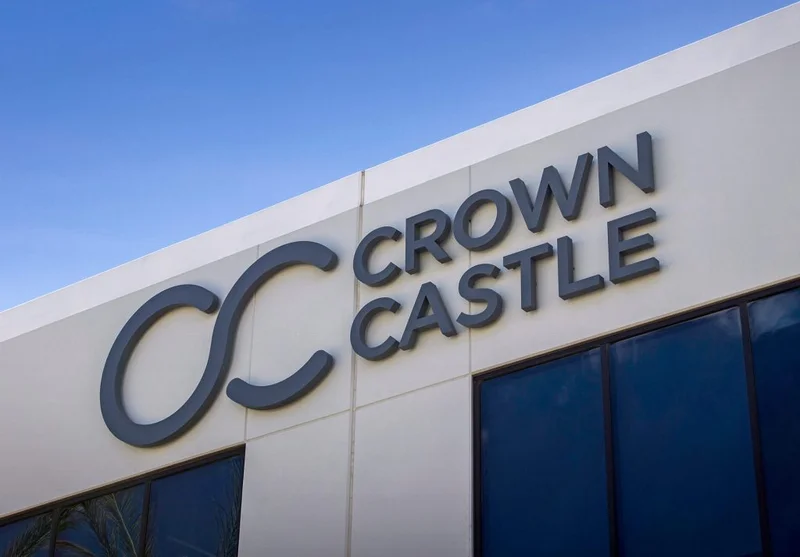Tracking Wealth Through the AI Lens
Tracking Wealth Through the AI Lens
I want you to imagine something for a moment. Look at the phone in your hand or the laptop on your desk. It’s a seamless portal to a universe of information, a sleek piece of glass and metal that feels like pure magic. But that magic isn’t conjured from thin air. It’s beamed down from hulking, unglamorous towers of steel and wire that dot our landscapes—the silent, powerful sentinels of our digital age.
We almost never think about them. And that’s why, when a company like Crown Castle makes a move that seems, on the surface, like a dry piece of financial news, most people just scroll past. A dividend cut? A sale of assets? It sounds like boardroom jargon. But I’m telling you, what’s happening right now is one of the most significant and clarifying bets on the future of technology I’ve seen in years. This isn’t just a corporate restructuring; it’s a compass pointing directly at where our connected world is headed.
When I first saw the headlines about Crown Castle selling its fiber business and cutting its dividend by 32%, I can imagine the knee-jerk reaction from Wall Street. But my reaction was different. This is the kind of breakthrough clarity that reminds me why I got into this field in the first place. They are making a monumental choice to go all-in on the single most critical piece of infrastructure for the next generation of technology: the tower.
Let’s be clear about what Crown Castle is doing. They’re selling off their extensive fiber network—the capital-intensive, lower-margin part of their business—to become what the industry calls a "pure play" tower company. In simpler terms, they are shedding a complicated, expensive business to focus on the one thing they do better than almost anyone else: owning and leasing space on 40,000 irreplaceable steel structures.
To the casual observer, ditching a growing fiber business looks like a retreat. The headlines focus on the dividend cut, framing it as a loss for investors. But this is where we have to look deeper. This isn't a retreat; it's a strategic jettisoning of cargo. Imagine a ship captain in a high-stakes race who decides to throw everything non-essential overboard—even valuable goods—not because the ship is sinking, but to catch a powerful, once-in-a-generation trade wind. That’s what this is. Crown Castle is lightening the ship to ride the coming data tsunami.

The economics of a cell tower are, frankly, beautiful in their simplicity and power. The costs are mostly fixed—a plot of land, the steel structure. But the revenue? That has incredible leverage. A carrier like AT&T leases a spot. Then they add new 5G equipment, and the rent goes up. Then another carrier wants to co-locate on the same tower, and the revenue nearly doubles with almost zero additional cost. It’s a business model built on the unstoppable growth of human connection, and with a churn rate of just 1.4%, it's one of the most stable and predictable revenue streams in the entire tech ecosystem. What do you think is a better bet for the next decade: the complex, competitive grind of laying fiber cable, or owning the sky itself?
So, why make this dramatic bet now? Because we are standing at the very beginning of a paradigm shift. For the last decade, mobile data growth has been a steady 20-30% a year, driven by video streaming and social media. That was the warmup. The next wave, powered by true, consumer-facing AI, will make that look like a trickle.
Right now, most of the heavy lifting for AI happens between massive data centers, but soon—sooner than we think—AI agents will live on our devices, constantly communicating, learning, and interacting with the world, and that represents an explosion in mobile data traffic that is almost impossible to fully comprehend. The sheer volume of data required for a world of personalized AI assistants, augmented reality overlays, and autonomous systems is just staggering—it means the gap between the digital and physical worlds is closing faster than we can even process, and all of it will flow through the air.
This is why the debate over satellites versus towers is so important. While direct-to-device satellite connectivity is a fantastic solution for remote areas and emergency services, it’s a niche product. Why? Because we live our digital lives indoors—in our homes, our cars, our offices—where a clear line of sight to a satellite is a fantasy. Towers are the workhorses. They are the foundational layer.
You could think of our national network of cell towers like the Roman roads. The Romans didn't just build a few highways; they built an empire-spanning system of infrastructure that enabled commerce, communication, and culture to flourish for centuries. It wasn't the most glamorous part of the empire, but without it, nothing else was possible. That's what these 40,000 towers are becoming: the non-negotiable bedrock for the 21st-century digital economy. This also hands companies like Crown Castle immense responsibility. With such a central role in our future, how do we ensure this critical infrastructure is resilient, secure, and provides equitable access for everyone?
So, forget the stock charts for a minute. This isn't a story about a Real Estate Investment Trust. It's a story about conviction. It’s a declaration that for all our talk of "the cloud" and the ethereal nature of the internet, our digital destiny is physically anchored to the ground. Crown Castle is betting the entire company not on a flashy new app or a speculative technology, but on the enduring, fundamental need for steel towers reaching for the sky. And in a world of constant change, that’s one of the most visionary bets I’ve ever seen.